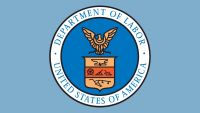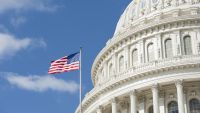Personal Protective Equipment - What is the Cost?

It's no secret that workplace safety and protection of workers' rights are two major priorities for the Democratic Party. This notion was reiterated in April when Democrats introduced legislation in Congress that would require the Occupational Safety and Health Administration (OSHA) to issue a Personal Protective Equipment standard within six months of passage.
Current law mandates that OSHA requires employers to protect their employees from workplace hazards that can cause injury. According to OSHA criteria, controlling a hazard at its source is the best way to protect employees. Depending on the hazard or workplace conditions, OSHA recommends the use of engineering or work practice controls to manage or eliminate hazards to the greatest extent possible. For example, building a barrier between the hazard and the employees is an engineering control; changing the way in which employees perform their work is a work practice control.
When engineering, work practice and administrative controls are not feasible or do not provide sufficient protection, employers must provide personal protective equipment (PPE) to their employees and insure its use. PPE are equipment — such as gloves, foot and eye protection, protective hearing devices, hard hats, respirators or full body suits — worn to minimize exposure to a variety of hazards. In the construction industry, some are concerned that the standard could be broadened, placing an unnecessary financial burden on employers.
A mid-1990s decision by the Occupational Safety and Health Review Commission (OSHRC) unsettled, what some deem to be, established norms in American industry by ruling that nothing in the standard could be interpreted to require employers to pay for their workers' PPE. In effect, the OSHRC decision left it to the employer's discretion to decide what, if any, equipment they would "provide." Groups in opposition of this ruling, such as the AFL-CIO and the United Food and Commercial Workers Union (UFCW), felt the ruling shifted the burden for adequate safety equipment from employers to employees.
In 1997, OSHA signaled a move to overturn the ruling by announcing a new rule, explicitly requiring employer payment for PPE. After initial review, the rule was proposed in 1999, along with an agency announcement that the final rule would be issued in July 2000. However, that deadline — as well as several others — passed without further action.
The most recent action by OSHA was in 2004, when the agency announced its decision to reopen the docket, requesting further comments from the public. This step opened the door to a potentially complete revision of the 1999 proposed rule. In spite of what appeared to be a step toward a conclusive decision, action was further delayed by OSHA. The unions submitted comments during this period, maintaining that any retreat from employer-paid PPE would worsen long-range safety in the construction industry. Despite pressure from the unions, OSHA delayed any further action.
On Jan. 3, 2007, the AFL-CIO and UFCW filed suit in the U.S. Court of Appeals for the District of Columbia to require OSHA to take action on this issue. In response to the unions' lawsuit, industry filed an amici curiae brief stating that the unions should not be allowed to force OSHA to promulgate the PPE rule. In addition, the amici curiae brief maintained that OSHA lacked authority to issue such a rule because the issue was purely economical in substance rather than a safety issue.
On March 16, three days before the court-ordered response of the Bush administration was due, Secretary of Labor Elaine Chao filed papers asking to hold the case "in abeyance" until November in order for the agency to complete its current process. Though the case is now on hold, it will be renewed should the agency fail to meet its November commitment; however, the new majority in Congress has signaled its intention to get a PPE standard from OSHA sooner rather than later. Should OSHA allow the November deadline to pass, it will simply invite further and stronger congressional intervention on the matter.
With both Congress and the courts lurking, it is likely that OSHA will meet its November deadline. The only thing that remains to be seen is whether the agency will abide by tradition and long-range interests of workplace safety by issuing a fair and balanced rule.
About the Author
Jessica Johnson Bennett was the Director of Government Affairs for MCAA. She has an extensive background in public affairs and government relations. Her expertise in strategic planning, PAC management and operations help on key policy issues.


















